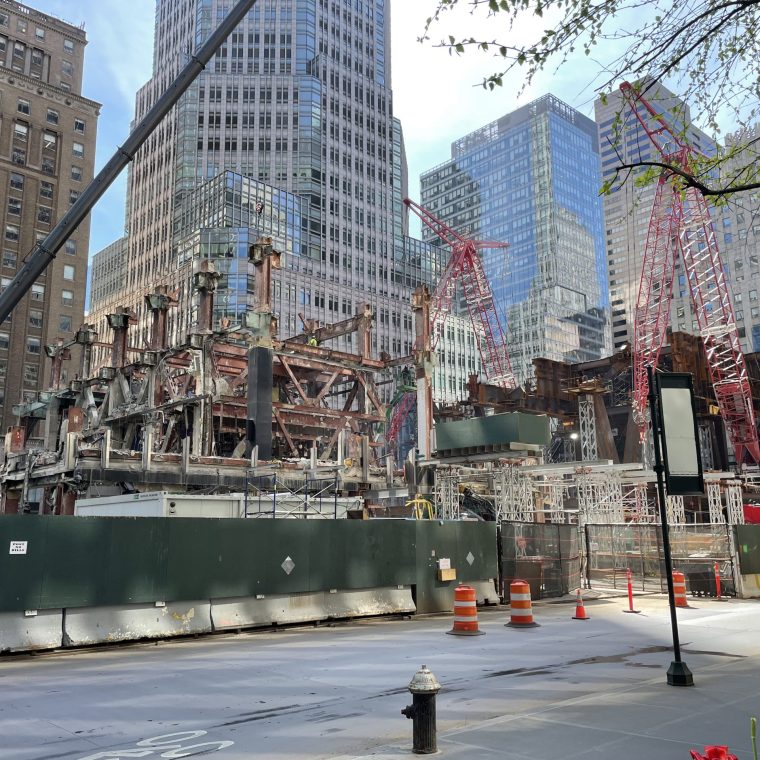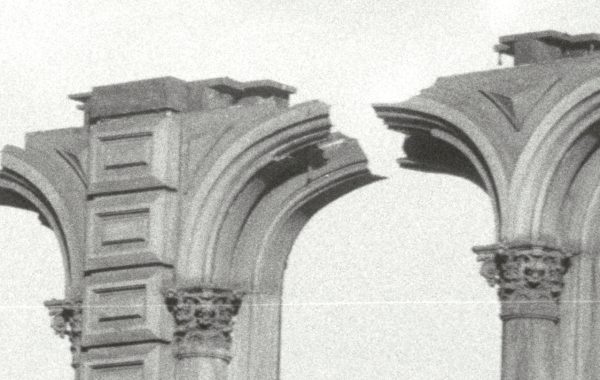Skyscraper construction in Midtown is nothing new, but this is an interesting moment. The work on the left is the final stage of demolition of the superstructure of the old 270 Park Avenue; the work on the right is the beginning of the superstructure of the new 270 Park Avenue. Like a lot of building sites in Manhattan, the new building will the third building constructed on the site, but all here three are worthy of note.
The area directly north of Grand Central had been developed as the train yard for the station starting in the early 1870s, and had been mostly vacant land before that. Fourth Avenue was not opened there because its line was covered by the yard, and the cross streets were carried over on bridges.

The current site of 270 Park would be on the left, about where the tracks are curving to the right to converge. After the trains were electrified and the yard put underground for the new station, the air-rights over the tracks were developed. The 270 Park site was developed as the high-end apartment house called the Hotel Marguery:

Note the tracks visible to the left, where air-rights construction had not yet taken place. All of Park Avenue in the 40s and 50s streets was built up with similar steel-frame apartment buildings, with their columns threaded through the tracks to foundations below. This building was demolished in the mid-1950s and replaced by the Union Carbide Building, the first international-style office building on Park. Union Carbide was 52 stories tall and most notable for having been primarily designed by Natalie de Blois at a time when almost no women were designing skyscrapers.
The building was sold to Manufacturers Hanover Bank in 1978; several corporate mergers later and it was owned by JP Morgan Chase, which is currently demolishing the 700-foot building to construct a 1400-foot building. The 1960 building has replaced the Singer Building as the tallest building voluntarily demolished.
I find it hard to get very excited about any aspect of this story. The Hotel Marguery was a great place to live but did relatively little for the streetscape. The Union Carbide Building was one of the class of early glass-curtain-wall buildings that have always left me cold. It’s unfortunate that de Blois’s work has been removed, but I don’t find an architect’s connection to be a convincing reason for landmark designation. And, judging by the renderings, I will not be a big fan of the new JPMorgan Chase building either.
It’s a little weird to feel so little reaction to a site with three impressive (chronologically: luxurious, very tall with a pioneering architect, and extremely tall) buildings in its history. The obvious comparison is the west block front of Fifth Avenue between 33rd and 34th Street, which went from the mansions of two members of the Astor family to the Waldorf Astoria Hotel to the Empire State Building. I have much stronger feelings about the second and third stages there.




You must be logged in to post a comment.